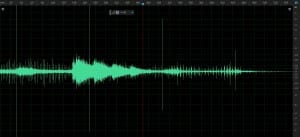Some really useful sounds in this for the musician to work with as this piece is made up of raw sounds and some examples of effects which he considers may find their way into the final piece. In this way from the choice of material to the editing this is a collaborative work between him and the musician certainly but also with you as an audience since you will be wondering too how this is going to be woven into the final piece. There are examples of reverb and reverse in this which tell me of a link between the horse and the human both working the city streets; one the animal subservient to the other. However the marching style of the human could be interpreted as being representative of our enslavement to capitalism, in other words that were as beholden to capital and the acquisition of capital as the horse is to our burdon.
This is further highlighted by the question and answer session between 15 and 20 seconds and industrial sounds thereafter as the horse disappears into the distance. Does this indicate the horses escape while we are still working!
